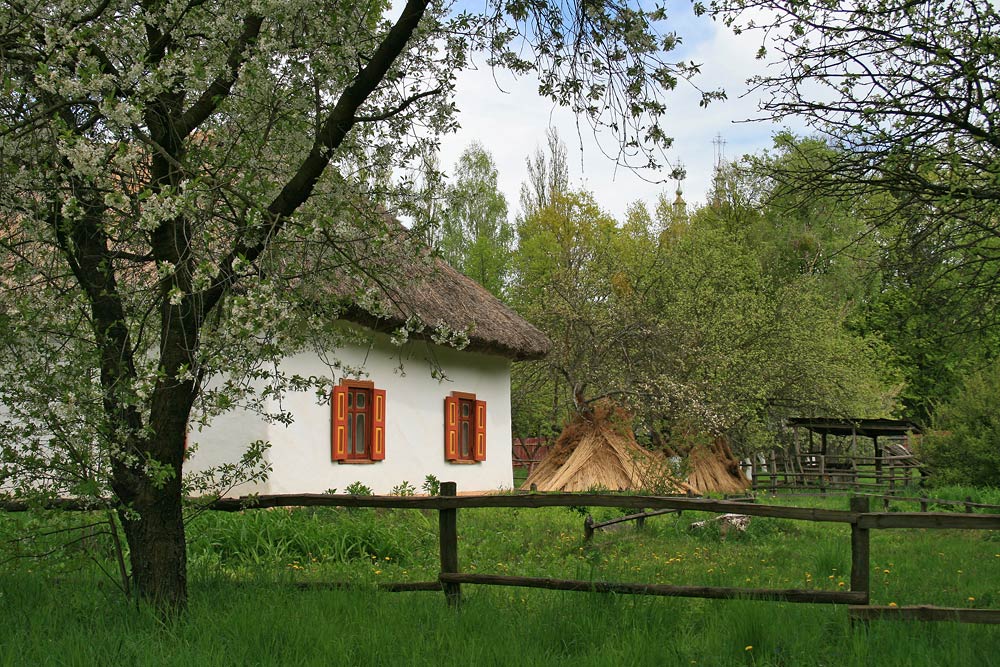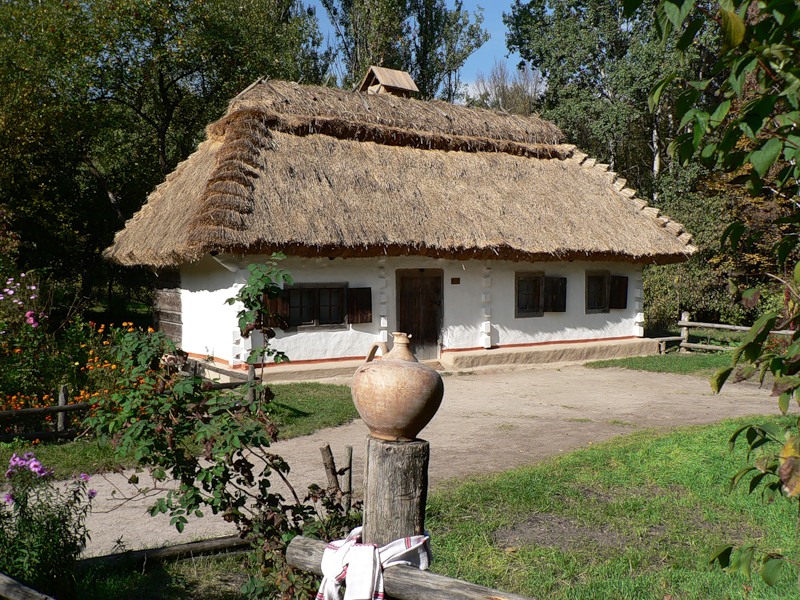 Choosing a place to build your future home is a very important matter that requires considerable knowledge and attention. In Ukraine, as in many countries, they understand this and still adhere to established traditions.
Choosing a place to build your future home is a very important matter that requires considerable knowledge and attention. In Ukraine, as in many countries, they understand this and still adhere to established traditions.
How to choose a location for a new building
This is the initial and most important action – the entire history of the dwelling and the comfort in it depends on it. The choice is influenced by many factors and conditions: how far the dwelling will be from the street, what its relief will be, how the building will be located in relation to the cardinal points. And this is only the tip of the iceberg. Previously, there was a whole system, accompanied by rites, rituals, each of which had a meaning and its own fullness, but over time, the complex of actions broke up into separate parts and remained only among the rural population, and even there not completely.
To find a new place to live, a number of factors had to be taken into account:
- The garden had to be behind the house and the barn complex and go out to the water.
- The place should be quiet, that is, in virgin territory.
- It needs to be free of moisture, and there needs to be no dew in the morning.
- Trees should not grow on it.
- The place should be cozy, and this can be the case if there were livestock there - they will not choose anything bad. So there will be comfort and peace in the family.
- There should be space for outbuildings, as well as a convenient entrance.
- Considering the cardinal points, you should build a house with the entrance facing south or east.
 In addition to the testimonies and wishes, there were also many warnings and prohibitions. The work of construction was very important - for a lifetime.
In addition to the testimonies and wishes, there were also many warnings and prohibitions. The work of construction was very important - for a lifetime.
- The new house had to be no smaller than the old one – that way the family wouldn't shrink.
- You can't build on the same spot where the old one used to be - you have to move it, at least a little.
- Take into account the family that lived before this one - it is impossible for it to have drunkards, thieves or other dangerous relatives. Also, if the previous family died of a plague, or were ill for a long time. All this predicted the same fate for the new family.
- You can't build on a place where there have been quarrels, fights, or divorces.
- Where someone was killed or the place was otherwise desecrated. If there was a burial here of someone, especially a hangman.
- On the site of an old church or other holy place.
- On a piece of land where threshing used to take place.
- You cannot choose a place for building at a crossroads, wasteland, pasture, or on the border.
- Do not build a house on a spot that divides two pieces of land in half.
- You can't put it on paths, roads, swamps, or rocks.
- It is dangerous to plant in a place where a tree used to grow. Be especially careful not to plant thorns, elderberries, pears, and most importantly, viburnum - the most hostile plant for this action.

- In place of a cellar or pit, a barn or stable, a garbage dump or cesspool.
- In a place where rainwater usually collects.
- It is very dangerous to build a house on the site of a structure that previously burned down from a lightning strike.
Given the complexity of the matter, such a responsible decision was not made alone. They used the help of old people who remembered the traditions, or turned to fortune tellers. It was possible to check the safety of a place by sowing rye, and depending on how it grew, it was decided whether to build a house there or not.
In addition to rye, there were other means of checking whether the chosen place for housing would be correct, or whether it would bring misfortune to the owner. For example, one of the rituals was as follows: it was necessary to hammer in wooden stakes or put stones under each corner of the future house, and after sunset, so that no one else could see, put grains of wheat or rye in a given quantity - 27, 30, 33, 36, etc.
At the same time, on a chair or small table covered with a towel, place bread, salt, and water in any vessel on the cross. The cross was later transferred to the penitential post. Water could also be placed around each peg to ensure a sure result.
 The next morning, before sunrise, it was necessary to check the condition of the bread, grain, salt and water. Everything had to remain intact, and as for the water - it was better to have more of it. This was a sign of a correctly chosen place, safe for the building and the family. The rite can be repeated several nights in a row - for greater certainty.
The next morning, before sunrise, it was necessary to check the condition of the bread, grain, salt and water. Everything had to remain intact, and as for the water - it was better to have more of it. This was a sign of a correctly chosen place, safe for the building and the family. The rite can be repeated several nights in a row - for greater certainty.
Another ritual was performed using a metal or clay utensil. It could be a frying pan, a jug, or a pot. In the evening, they would put a bundle of wool under it, and in the morning they would go check it – if it got wet, then the house would be wet and the place was not the best.
The rituals for building a house had to be performed only by men, but this was in the distant past. Already in the 19th century, the tradition regarding the participants was not so unchanged.
How to choose a time for bookmarks
This factor was very important for successful construction. The best time was considered spring or summer. In Podillia, for example, among all the days of the week, the best day for construction was Friday, especially on a full moon - so there would be good and prosperity in the house. Throughout Ukraine, favorable days were Tuesday, Thursday, Friday or Saturday.
Times such as leap years, Mondays, Wednesdays, and holidays were undesirable for construction. Care had to be taken to ensure that the foundation did not fall on a martyr's day - this was the first sign that the work would not be completed.
Deposits
 The foundation work began early in the morning. In the center of the dwelling to be built, in front of the future stove (sometimes in the eastern corner of the south side), a chair covered with a towel was placed, on which was placed a cross, a bouquet of flowers, bread, salt, water or wine in a cup.
The foundation work began early in the morning. In the center of the dwelling to be built, in front of the future stove (sometimes in the eastern corner of the south side), a chair covered with a towel was placed, on which was placed a cross, a bouquet of flowers, bread, salt, water or wine in a cup.
The senior master kissed the bread on the towel with the words: “Lord, help me.” Then he began work. The master then took the towel for himself, along with the money that was for the advance. He later paid off his assistants, if he had any.
The master began the foundation by making a cross. That cross grew along with the construction – it rose higher and higher, until it was installed in the attic at the end of the construction process.
There was a sign on how to make a building stand as long as possible: you had to wait until a raven flew by, and only then lay the first stone or other sacrificial attribute.
The master was a very respectable and respected person, which was part of the ritual: at the foundation, he was well treated, they tried not to get into his field of vision - from this you could get sick or even die. At the foundation, you could not put a tree crosswise, because, as with the construction of a new house, this could lead to the appearance of a dead person in the house.
The owners of the house under construction laid down small money, bread, grain, herbs, potions, wine, garlic, lamps, and other sacrificial elements. Just as it was done with the first stone, stake, and other building materials. In addition to the owners themselves, godparents could do this, as was the case in the southwestern regions.
 Sacrificial attributes should be placed under the four corners of the house. Sometimes this was done under one corner, and later it became a nook, located, as a rule, in the east. Later it was also called a holy corner - after the adoption of Christianity.
Sacrificial attributes should be placed under the four corners of the house. Sometimes this was done under one corner, and later it became a nook, located, as a rule, in the east. Later it was also called a holy corner - after the adoption of Christianity.
When the master and his assistants had already worked hard enough, the owner would prepare a decent meal for them. Relatives and neighbors were invited to the “foundation” – it was the first meal on the site where the house would later be built. This was how nature received its tribute from the grateful residents.
The owner, according to tradition, first drank a glass of vodka himself, with words of gratitude to everyone who came, after which he offered it to everyone, and he started from the place where the sun rises. After dinner, the guests went about their business, while the master got back to work. But sometimes the guests could help him and everyone worked together until the evening.
Laying the scum
 This is one of the very important stages of building a house. Various objects were placed under the head of the svolog, which were previously consecrated in the church, it could be incense - from lightning strikes. From the opposite corner (the so-called deaf) they placed a small piece of bread, money for prosperity, salt, wool - so that it would be dry and warm. It was forbidden to bang while laying the svolog - this could lead to smoke in the new house. By the way, this tradition is still alive today.
This is one of the very important stages of building a house. Various objects were placed under the head of the svolog, which were previously consecrated in the church, it could be incense - from lightning strikes. From the opposite corner (the so-called deaf) they placed a small piece of bread, money for prosperity, salt, wool - so that it would be dry and warm. It was forbidden to bang while laying the svolog - this could lead to smoke in the new house. By the way, this tradition is still alive today.
The construction sacrifice was important - a kind of payment for a new home. In ancient times, it was even human sacrifices - in this cruel way, buildings were strengthened. Fortunately, later they were replaced with animal skulls, plants, and a completely symbolic sacrifice - small money. Even now, modern builders adhere to this tradition and throw money under the first stone - a symbol of prosperity and well-being in the house.
The further construction of the hut allowed everyone who wanted to join in – this was how they built the hut in groups.
The final "flower"
 And now the construction work was finished. A cross was placed on the ridge of the roof, flowers and ears of grain were laid out - this is what made the famous flower. Separate stages of construction were also celebrated, not only the end. For example, when the walls and ceiling were erected - the master attached flowers and a cross to the rafters. The owner himself tied a sheepskin coat there - for warmth in the house, a tablecloth - for cleanliness and order, a handkerchief with bread and salt. The latter went as a gift to the master.
And now the construction work was finished. A cross was placed on the ridge of the roof, flowers and ears of grain were laid out - this is what made the famous flower. Separate stages of construction were also celebrated, not only the end. For example, when the walls and ceiling were erected - the master attached flowers and a cross to the rafters. The owner himself tied a sheepskin coat there - for warmth in the house, a tablecloth - for cleanliness and order, a handkerchief with bread and salt. The latter went as a gift to the master.
Today's masters also honor the "flower" rite. This stage is a kind of sign - the host must deduct money for the settlement, and the hostess must set the table. Thus, the magical ritual has turned into a rather practical action, retaining its mystical meaning and becoming grounded.
If we recall the mysticism of the building rituals, it is worth mentioning the incompleteness that had to remain during construction. It was supposed to protect the new inhabitants of the dwelling from the disaster that could come when they saw that the work was finished. Therefore, the craftsmen left the part of the roof above the eaves uncovered - it was through this hole that disaster and possible evil were supposed to fly out. The hole was closed after some time, when the house was already clean. It was not yet possible to whitewash the entire building during the year - at least a small piece of the unfinished wall had to remain, in a modest place out of sight.


Write a comment